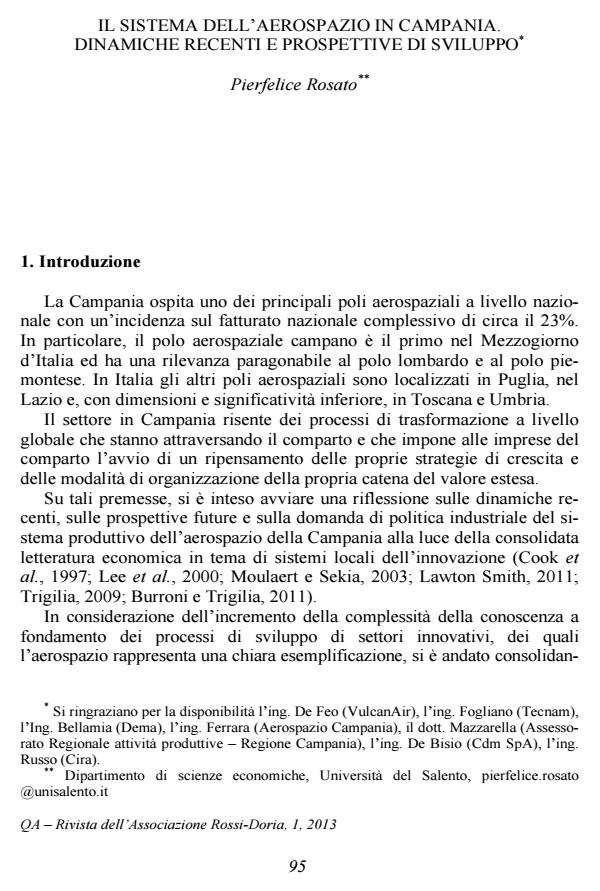The Aerospace Productive System in Campania. Recent Dynamics and Development Prospects
Journal title QA Rivista dell’Associazione Rossi-Doria
Author/s Pierfelice Rosato
Publishing Year 2013 Issue 2013/1
Language Italian Pages 22 P. 95-116 File size 442 KB
DOI 10.3280/QU2013-001004
DOI is like a bar code for intellectual property: to have more infomation
click here
Below, you can see the article first page
If you want to buy this article in PDF format, you can do it, following the instructions to buy download credits

FrancoAngeli is member of Publishers International Linking Association, Inc (PILA), a not-for-profit association which run the CrossRef service enabling links to and from online scholarly content.
The aim of this paper is to describe the structure and the main competitive dynamics of the Aerospace productive system in Campania. After a preliminarily on-desk analysis, on-deep interviews were held with qualified regional stakeholders in order to analyze relations among enterprises and their main export markets. Great attention is given to their connection with local research centres, including the training of specialized human capital. Description of the public policies in support of the industry is followed by some brief observations on the productive system’s development prospects. EconLit Classification: M20, R500, L520, L600
Keywords: Aerospace, Apulia, Competitiveness, District, Industrial policy, Optimal level of government
Pierfelice Rosato, Il sistema dell’aerospazio in Campania. Dinamiche recenti e prospettive di sviluppo in "QA Rivista dell’Associazione Rossi-Doria" 1/2013, pp 95-116, DOI: 10.3280/QU2013-001004